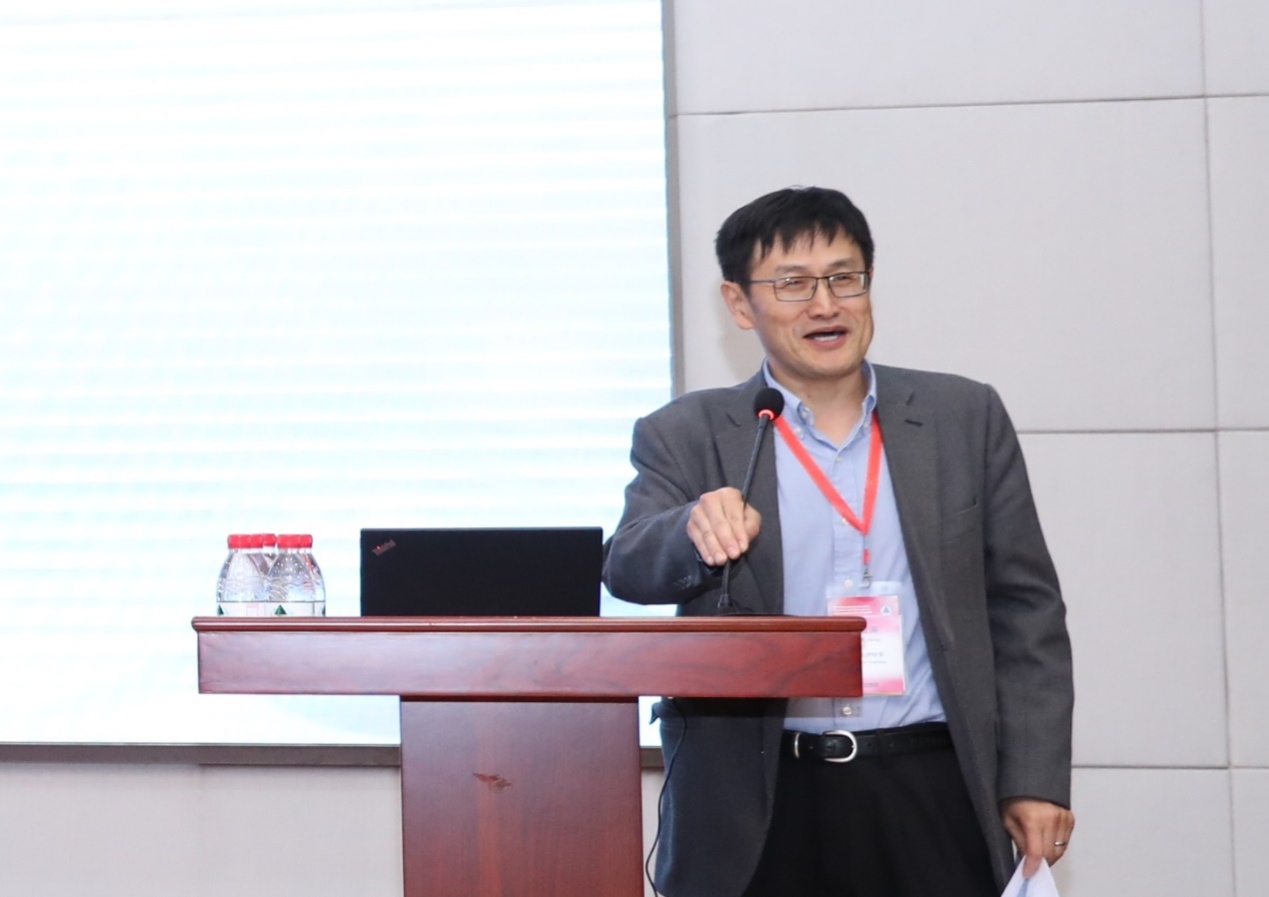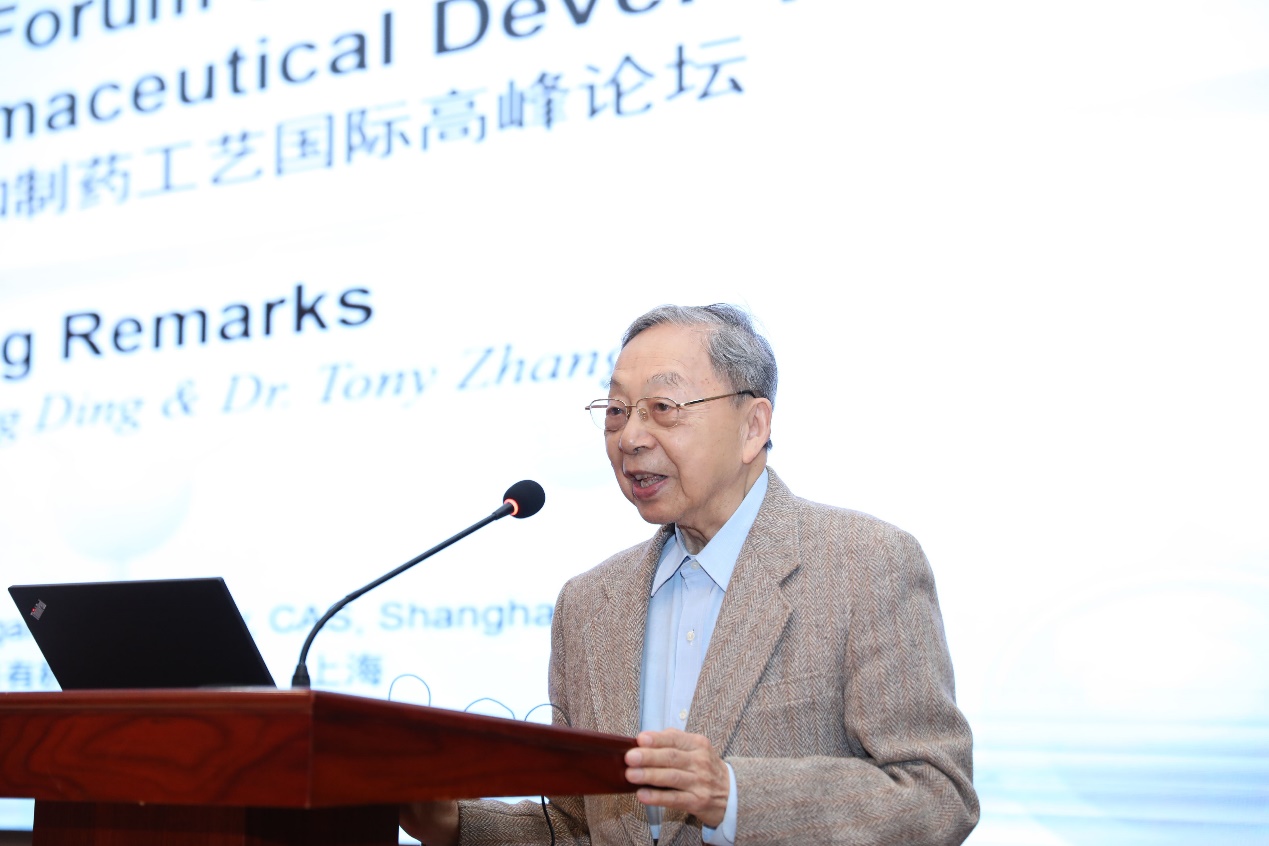The 2018 International Forum of Reactions and Processes for Pharmaceutical Development was held Nov 5-8th at Shanghai Institute of Organic Chemistry (SIOC), Chinese Academy of Sciences. Professor Kuiling Ding, Director of SIOC and academician of CAS; Dr. Tony Y. Zhang, CEO of Tyligand Bioscience; and Professor Wenjun Tang of SIOC, served as the conference chair, organizing committee chai ,and the conference secretary, respectively. With “Good Chemistry for Good Medicine” as the main theme, the forum featured thirty distinguished professors and industrial leaders as keynote speakers. Among them were Nobel Laureate of chemistry Professor Barry Sharpless, academicians Professors Shengming Ma, Qi-Lin Zhou, Xiaoming Feng and Fen-Er Chen; and seasoned scientific leaders from Merck, Lilly, J&J, Boehringer-Ingelheim, Amgen, BMS, Pfizer, Hengrui, etc. 363 researchers from 137 organizations across the globe including universities, research institutes, fine chemical, pharmaceutical and CRO, CMO companies attended the conference.
In his opening remarks, Professor Ding warmly welcomed the participants and articulated the importance and urgency of “Good chemistry” under current circumstance of academic research and pharmaceutical industry: “Pharmaceutical industry needs efficient chemical reactions to develop and manufacture medicines with good qualities, and academic researcher needs to invent good reactions to fulfill these needs”. He urged researchers in both academia and industry take this opportunity tackling the most challenging problems in organic chemistry and pharmaceutical industry, strengthen the collaboration, and promote commercialization of the novel academic research. He also encouraged graduate students and postdoctoral researcher to develop a better understanding of the industry and plan their future careers accordingly. During the lively panel discussion moderated by Dr. Tony Zhang, eight R&D leaders from both international and domestic pharmaceutical companies, addressed the most challenging unmet needs in pharmaceutical industry, and pondered over academic breakthroughs most likely to be adopted by the industry. They also debated over how to influence academic research directions and reform the graduate education to prepare for the evolving talents needs. The panel offered thoughtful insight on taking the fine chemical industry to the next level as well as tangible suggestions for researchers in both academia and industry.
Thirty keynote speakers shared their latest research progress and vision toward organic synthesis, biocatalysis, pharmaceutical process chemistry, metal catalysis and technological innovations in their lectures. The audience was touched by Professor Sharpless’s passion and enthusiasm as he delineated the discovery of the new-generation click chemistry. Professor Qi-Lin Zhou of Nankai University shared his group’s progress on Ni-catalyzed coupling reactions between simple olefins and carbonyl or imine compounds. Dr. Xiaoyong Fu from Wuxi STA stressed the importance of comprehensive evaluation of innovative options in Process R&D by sharing several successful stories of their recent work for the global clients. Professor Xiaoming Feng from Sichuan University detailed recent progress in synthesis of biological active compounds by using his flagship chiral N, N’-dioxide ligands. Dr. Kai Rossen from of Lundbeck Pharmaceutical, also the Editor-in-Chief of the journal Organic Process Research & Development by ACS, shared his view on the social impact of process chemistry and need for continued improvement with historic evolution of paracetamol synthesis. He also urged audience to work together to build the process chemistry community. Professor Biao Yu from SIOC, described a highly efficient and general Au-catalyzed glycosylation reaction developed by his group for the synthesis of complex glycoconjugates. Dr. Chris Senanayake from AstaTech provided an overview of process chemistry and catalysis programs when he as leading the process group at Boehringer Ingelheim Pharmaceuticals with much contribution from Chinese scientists. Dr. Guy Humphrey from Merck shared an excellent story of integrating five evolved enzymes together for the synthesis of a complex chiral drug, once again demonstrating the value of long-term vision and investment on basic research by Merck. Professor Shu-Li You from SIOC described the catalytic asymmetric dearomatization reaction which has opened a new dimension of chemical space. Dr. James Henry from Eli Lillydetailed astory of an IDO1 Inhibitor and further emphasized the importance of asymmetric catalysis in drug research. The lecture from Professor Shengming Ma from Fudan University detailed the latest effort from his group on highly efficient iron-catalyzed oxidation, which could potentially displace many traditional oxidation methods applied in industry. Much excitement was generated by Professor Li-Zhu Wu from Technical Institute of Physics and Chemistry, Chinese Academy of Sciences, who described the 1st direct conversion from benzene to aniline and phenol via photochemistry, a discovery with potentially similar importance to the Haber-Bosch process for synthetic ammonia. Professors Jinbo Hu and Xingang Zhang, both from SIOC, and Dr. Shoufu Lu from Shanghai AQBioPharma presented their latest progress in fluorine chemistry from their own perspectives. The audience was treated with a plethora of user friendly new fluorine reagents, new reactions and new fluorine-containing structural units that could drastically change the landscape of the pharmaceutical and process chemistry. The lecture by Dr. Yuanqiang Li from Zhejiang Jiuzhou Pharma showed the power of the asymmetric catalysis in industry, originally developed by Professor Qi-Lin Zhou and Kuiling Ding, respectively. He further emphasized the importance of collaboration for both science and industry. Dr. Yi Hsiao from Asymchem showcased a few successful examples of continuous chemistry in drug synthesis, which brought much attention from the audience. An interesting story of antibody-drug conjugate drug research was delivered by Dr. Feng He from Shanghai Hengrui Pharmaceuticals. Professor Wen Liu from SIOC updated the forum on biosynthesis of new thiopeptideantibotics and the bright future of biosynthesis in drug research. Dr. Vittorio Farina from Janssen Pharmaceutical, Dr. Sheng Cui from Amegen, Dr. Xudong Wei from Pharmaron, and Professor Fen-Er Chen from Fudan University, shared a number of great stories in process chemistry. The audience was impressed upon that beautiful process chemistry not only relies oncareful observation and deep understanding of chemical mechanisms, but also the remarkable problem-solving skills and creativity by the research team. The lecture by Dr. Ji Zhang from HEC Pharm discussed the recent progress on C-H activation and its outlook as well as limitation in industrial application. Professor Dawei Ma demonstrated the breakthrough in Cu-Catalyzed Ullman reactions with his new-generation oxalic diamide ligands and its broad capability in drug manufacture. Professor Haoran Li from Zhejiang University detailed the mechanism in Cu-catalyzed aerobic oxidation, while Dr. Jianguo Ma from Medicilon Inc., Dr. Jim Li from Sundia MediTech and Dr. Jianguang Zhou from Porton Pharma Solutions each introduced their capabilities and strengths in custom synthesis. Dr. Ian G. Lennon from ChiralQuest describedthe progress of asymmetric catalytic technology, originally developed by Professor Xumu Zhang, a journey from the lab to the ton-scale manufacturing of drug intermediates. He stressed that an organic combination of scientific finding, process optimization, industrial demand, and marketing was the key to the successful industrialization.
Academician Professor Li-Xin Dai, who attended all the lectures in the forum, delivered a succinct yet impressive concluding remark. He emphasized that today’s chemists have dual responsibilities of pushing forward the scientific frontier, as well as contributing to the national economy with applications of scientific innovations. He observed that the forum connected closely the researchers from both academia and industry. He anticipated that it will have a long lasting effect at promoting the transformation of basic research to industrial applications. Professor Dai also enthusiastically encouraged all attendees to listen attentively, think independently, collaborate positively, and contribute actively to the development of both science and pharmaceutical industry.
This gathering was the fourth international forum of reactions and processes for pharmaceutical development held in China and by far the largest with many international attendees. The previous three were held at Wuhan University and Southern University of Science and Technology, co-organized by Tongxieyi. The organizing committee decided that the next forum will be held in Tianjin in 2020. This forum was sponsored by many companies including Chiral Quest, Lianhetech, WuXiAppTec, HEC, Jiuzhou Pharmaceutical, Hengrui Pharmaceuticals, NHU, Pharmaron, Medicilon, Asychem Labs, Raffles, Sunix, Yanzheng, Yukang, Sinocompound, Anton Paar, andLeyan. Feedbacks and suggestions are warmly welcome from all chemists so as to help create a healthy eco-system for upgrading the community of chemical reactions and pharmaceutical technology.

Professor Kuiling Ding opening the forum

Dr. Tony Y. Zhang hosting the panel discussion

Keynote Speakers

Professor Li-Xin Dai closing the forum

Attendees gathering in the courtyard of SIOC


